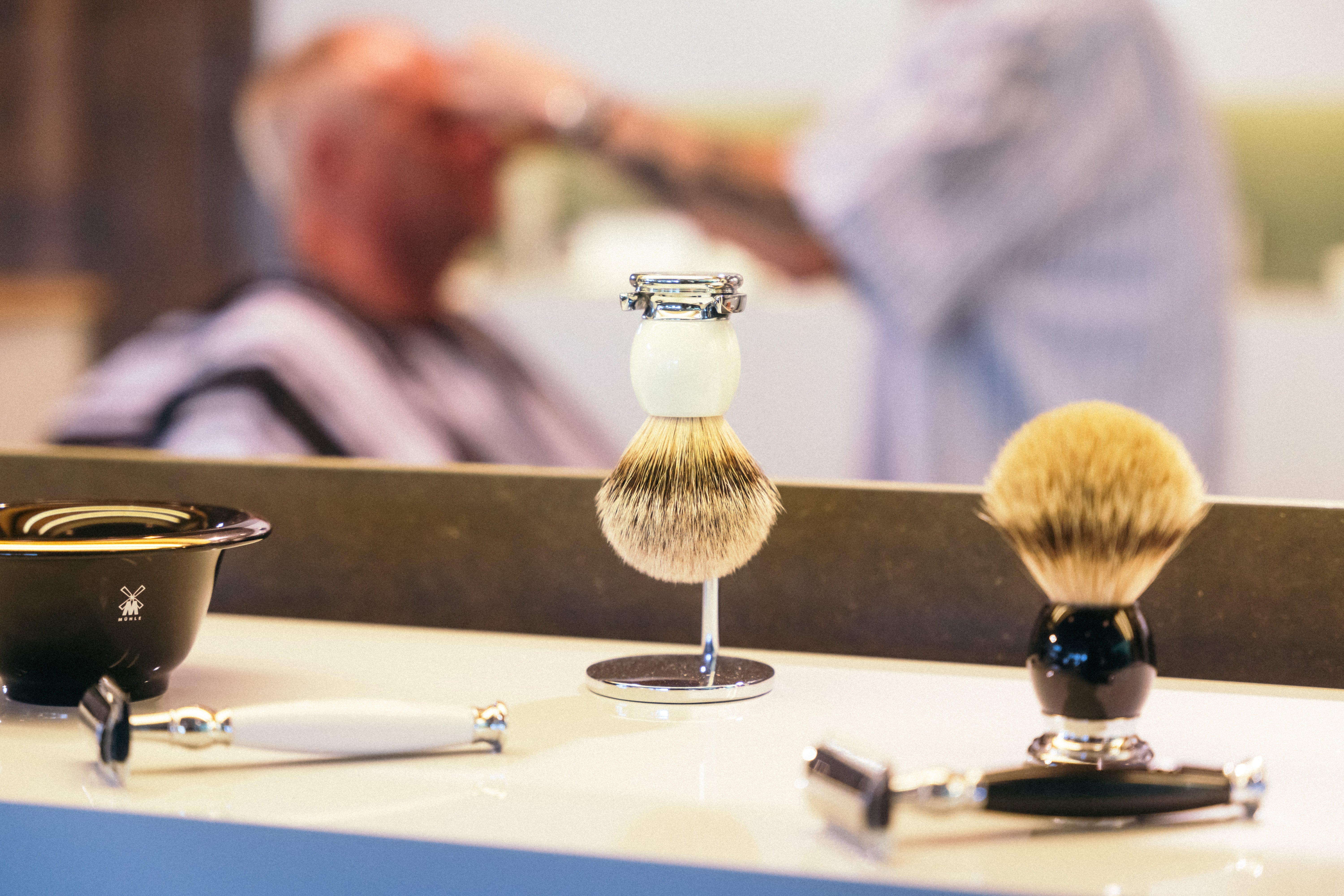A Traditional Guide to a Better Shave
In an age of disposable razors and foam-in-a-can convenience, there’s something deeply satisfying—and more effective—about traditional wet shaving. If you're ready to elevate your routine, learning how to lather shaving soap is one of the most important steps.
We believe that the ritual is just as important as the result. Whether you’re a seasoned shaver or a total beginner, this guide will teach you exactly how to use shaving soap and brush to build a rich, protective shaving lather.
Why Use Shaving Soap?
Before we get into technique, let’s talk benefits. Compared to aerosol creams or gels, shaving with shaving soap offers:
-
Better hydration of the skin and beard
-
A denser, longer-lasting lather
-
Fewer synthetic chemicals and fillers
-
A closer, smoother shave when used with a proper brush
According to the Journal of Cosmetic Science, traditional soaps with high glycerin content can reduce skin irritation and improve post-shave comfort compared to modern foam alternatives.
🧼 Try This: Taylor of Old Bond Street Sandalwood Shaving Cream
The Sandalwood Shaving Cream delivers a rich, creamy lather for a smooth, comfortable shave, with a warm, luxurious scent that blends notes of sandalwood, musk, and vetiver with hints of geranium, lavender, and orange blossom.
What You’ll Need
To get started, you only need a few tools:
-
A quality shaving soap
-
A shaving brush (boar, badger, or synthetic)
-
A shaving bowl or scuttle (optional but recommended)
-
Warm water
-
A razor of your choice
🖌️ Recommended Brush: nom THEO Vegan Fiber Shaving Brush
The synthetic fibres offer excellent performance, are more durable, and appeal to users for their vegan qualities and ability to create a particularly creamy shaving lather.
How to Use Shaving Soap and Brush: Step-by-Step
Here’s how to use shaving soap and a brush for a perfect shave:
1. Soak Your Brush
Place your shaving brush in warm water for about 1–2 minutes. This softens the bristles and helps them load the soap more effectively.
2. Bloom the Soap (optional)
For hard pucks or triple-milled soaps, add a few drops of warm water directly onto the soap surface. This helps soften the top layer, making it easier to lather.
3. Load the Brush
Gently shake excess water from the brush, then swirl it in the soap using circular motions. After 20–30 seconds, the brush should be loaded with a rich, paste-like soap, ready to lather.
✦ Pro Tip: This step is crucial in learning how to lather shaving soap properly. Underloading is one of the most common beginner mistakes.
4. Build the Lather in a Bowl (or Face Lather)
If you’re wondering how to use a shaving brush and bowl, here’s the move: swirl your brush in your bowl with light pressure and small circles. Add drops of water as needed—lather should go from pasty to creamy, with a yogurt-like consistency and soft peaks.
You can also face lather by applying the loaded brush directly to your damp face and building lather in circular motions.
Need a place to whip your lather? Try the White Porcelain Shaving Dish from MÜHLE.
5. Apply and Shave
Apply the lather evenly across your face (or wherever you're shaving) in a circular motion to lift hairs and exfoliate gently. Now you're ready to shave!
🪒 Complete the Ritual: MÜHLE Traditional Chrome Safety Razor
Long-lasting and corrosion-resistant, the MÜHLE R89 chrome choice finish provides incomparable quality and longevity. A premium product that produces a distinctly close and lasting shave
✦ Wondering how to shave with shaving soap? Use short, controlled strokes with the grain, then reapply lather for additional passes if needed.
🧼 Shop Our Shave Soaps and Creams
How to Use Shave Soap for the Best Results
Here are a few extra tips for mastering the art of shaving with shaving soap:
-
Practice makes perfect. Your first few lathers might be too dry or too airy—adjust water and loading time accordingly.
-
Clean your gear after each shave. Rinse your brush thoroughly and let it dry bristle-down.
-
Choose a high-quality soap. The best results come from soaps rich in natural fats, glycerin, or shea butter.
Sources:
Draelos, Z.D. (2010). Cosmetic Dermatology: Products and Procedures. Wiley-Blackwell.
— Discusses the benefits of traditional shaving products on skin hydration and irritation reduction.
Geis, R., & Heldreth, B. (2000). “Shaving Preparations.” In Cosmetic and Toiletry Formulations, Vol. 4.
— Explains differences between soaps, creams, and foams, and how their composition affects shaving performance.
Journal of Cosmetic Science (2014). “Comparison of Skin Irritation from Aerosol Foams vs. Traditional Soaps.” Society of Cosmetic Chemists.
— A study comparing chemical-laden shaving foams to traditional, fat-based soaps and their effects on sensitive skin.
Michaels, A., & Lewis, T. (2022). “The Revival of Traditional Wet Shaving.” Grooming Journal, Issue 12.
— Covers the resurgence in popularity of shaving soaps, bowls, and brushes due to performance and sustainability.
American Academy of Dermatology (AAD). (2023). Shaving Tips for Men
— Official guidance on using proper shaving tools and techniques to minimize skin irritation.
0 comments





